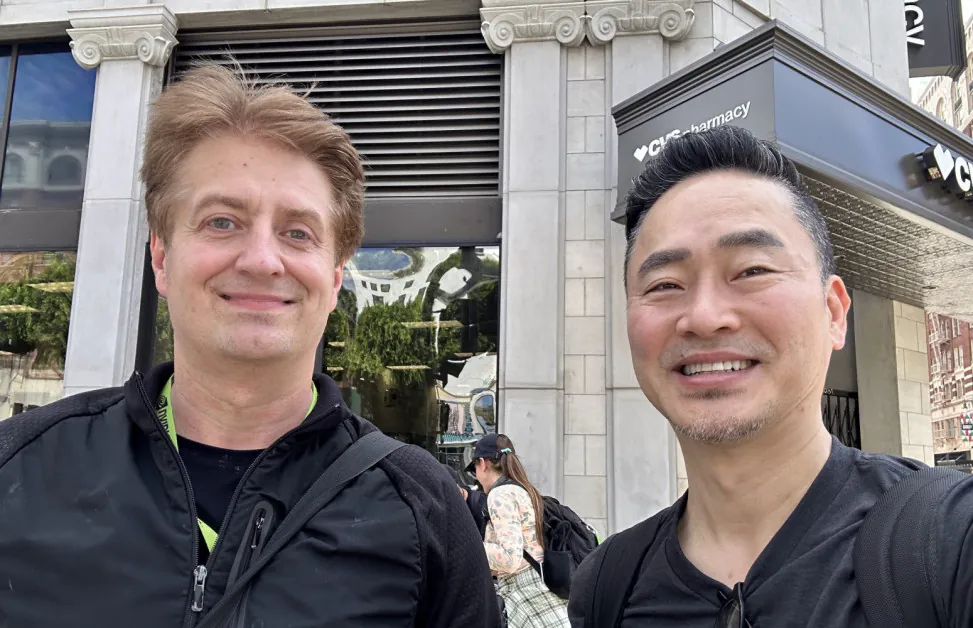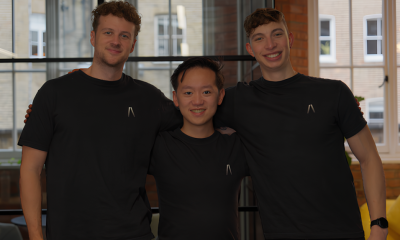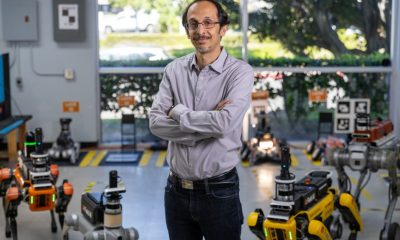Funding
Foundation EGI Raises $23M to Build the World’s First Engineering General Intelligence Platform

Foundation EGI has raised $23 million in Series A funding to transform how industrial engineers design and manufacture physical products—using an AI-native platform that encodes the rules of physics, spatial relationships, and mechanical systems directly into its core. The oversubscribed round, which brings the company's total funding to over $30 million, was led by Translink Capital with participation from RRE Ventures, McRock Capital, Escape Investment Management, Fifth Growth Fund, and returning investors including E14 Fund, UNION, GRIDS Capital, and Henry Ford III.
Reimagining Engineering with General Intelligence
Foundation EGI is pioneering a new category of industrial AI known as Engineering General Intelligence (EGI)—a class of artificial intelligence purpose-built to understand and participate in the engineering process itself. Unlike generic large language models that process natural language and interpolate across training data, EGI is designed to reason in engineering terms. It grasps not only the semantics of technical language but also the physical realities and constraints of manufacturing, materials, geometry, and design rules.
This level of intelligence allows EGI to work alongside human engineers in a collaborative fashion: reviewing schematics, suggesting optimizations, generating documentation, and even questioning design assumptions—much like a senior colleague would. It's not just AI that automates; it's AI that understands engineering.
Central to this capability is Foundation’s Domain-Specific Language (DSL)—a custom-built programming language that formalizes engineering principles, processes, and standards into a machine-readable format. The DSL constrains the AI to produce only physically valid and traceable outputs, ensuring precision and eliminating common issues like hallucinations or unverifiable results. In short, it’s a guardrail that transforms a creative AI into a reliable engineering partner.
“Our platform isn’t just about automation—it’s about intelligence,” said Prof. Wojciech Matusik, co-founder and Chief Scientist. “We’re building AI that knows how to challenge assumptions—just like the best engineers do.”
From MIT Research to Industry Deployment
Foundation EGI was born from groundbreaking research at MIT’s Computer Science and Artificial Intelligence Laboratory (CSAIL), led by co-founders Wojciech Matusik and Mike Foshey. Their 2024 paper, Large Language Models for Design and Manufacturing, sparked interest across the engineering world and laid the groundwork for the EGI platform.
The company’s founding team blends academic research, industrial engineering, and product development expertise:
- Dr. Mok Oh (CEO) is a serial entrepreneur and former executive at PayPal, Samsung, and Mercari.
- Prof. Wojciech Matusik (Chief Scientist) is a leading voice in computational design and physics-based simulation at MIT.
- Mike Foshey (Head of Research) previously led AI-driven manufacturing research at MIT CSAIL.
Their shared vision? To empower engineers with intelligent tools that go beyond automation—to true co-creation.
Redefining Engineering for the AI Age
Engineering teams today face immense complexity—juggling scattered specifications, siloed knowledge, and manual workflows that don’t scale. Foundation EGI tackles this head-on by unifying the entire product lifecycle, from ideation and CAD modeling to documentation and manufacturing output.
Instead of relying on brute-force data training or statistical interpolation like traditional AI models, EGI uses embedded rulesets and real-world simulation. That makes it ideal for industries like automotive, heavy equipment, aerospace, and consumer appliances—where precision, auditability, and compliance are critical.
As CEO Dr. Mok Oh puts it, “The next industrial revolution will be AI-native. We're creating tools that understand how engineers think and work—tools that collaborate, not just calculate.”
The Road Ahead: Rebuilding the Engineering Stack with AI at Its Core
Foundation EGI is redefining the foundational software infrastructure on which physical products are built. By introducing a purpose-built intelligence layer that understands geometry, material behavior, mechanical constraints, and manufacturing logic, EGI sets the stage for a future where engineering becomes increasingly autonomous, precise, and creative.
In the coming years, this technology could reshape how entire industries operate. Instead of relying on siloed design teams, outdated CAD tools, and weeks of back-and-forth with documentation or simulation platforms, companies will be able to iterate on full product concepts in real time—co-developing with AI that deeply understands the language of engineering.
EGI’s roadmap points toward a fully integrated design-to-manufacture pipeline where generative ideation, validation, compliance, and instruction output are seamlessly handled by the AI itself. This evolution has the potential to dramatically lower the barrier to entry for new product developers, compress hardware development cycles from months to days, and enable companies to test 100x more ideas before committing to a single prototype.
Just as Git and DevOps transformed software engineering into a collaborative, fast-moving discipline, Foundation EGI envisions a future where hardware engineering benefits from versioned, verifiable, and intelligent co-design—turning today’s brittle documentation into dynamic, living systems of record.
In this future, engineers will not be replaced—but they will be amplified. Their time will be focused on creative decisions, innovation, and first-principles thinking, while EGI handles the grunt work, compliance layers, and system-wide optimization that currently slows progress.
In the words of Dr. Oh: “This is the kind of AI that helps engineers imagine what traditional tools told them wasn’t possible.”












